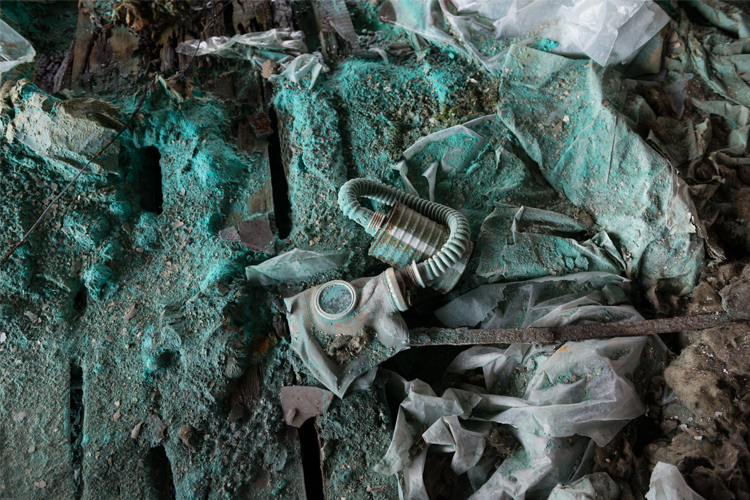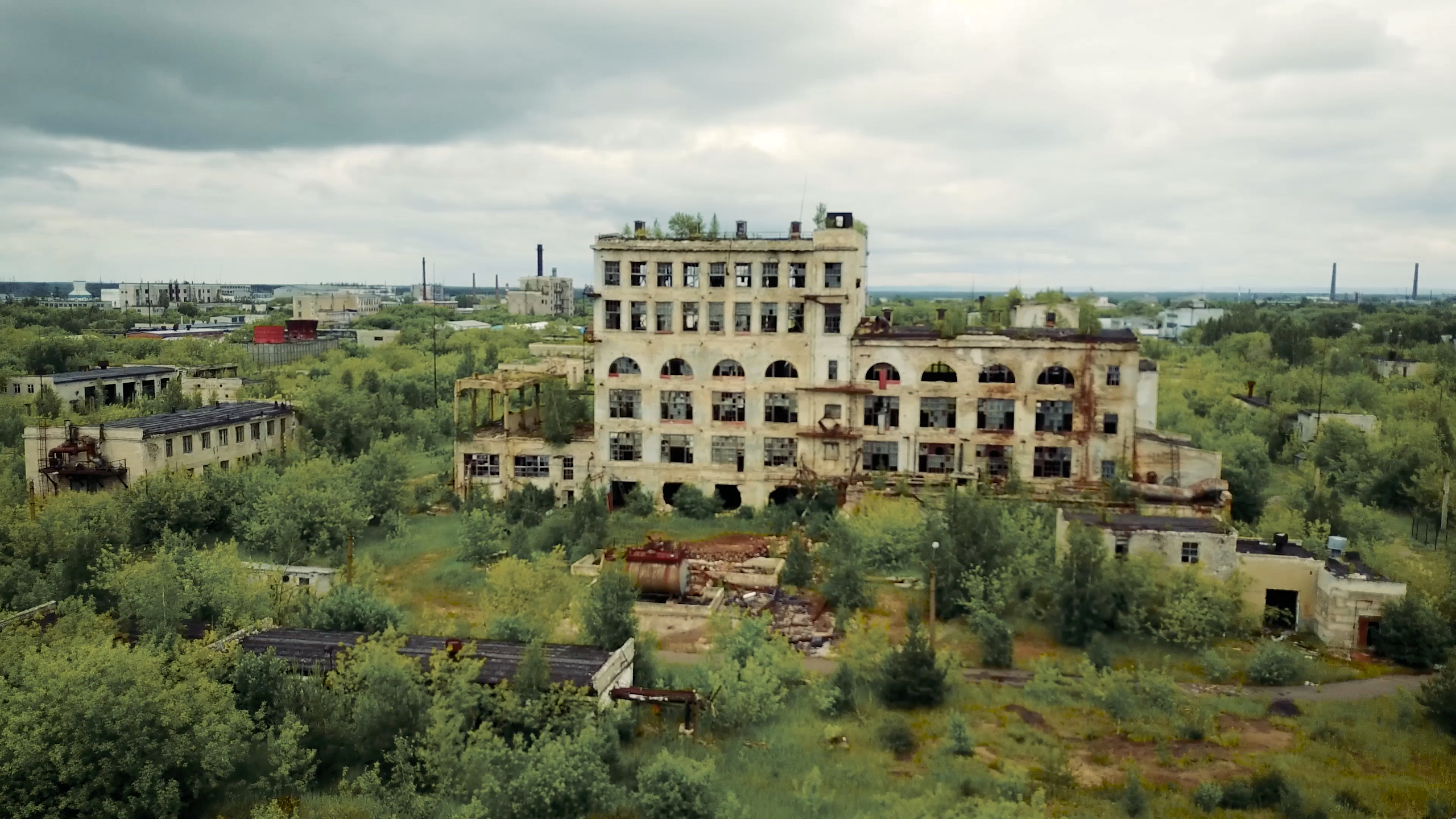Promzona - Pavel Otdelnov
Pavel Otdelnov is one of Russia’s most acclaimed contemporary artists. His large-scale family saga Promzona is shown at the Uppsala Art Museum, where paintings, archival material and drone images depict life in an industrial zone. Departing from early Soviet’s society of utopian visions and engineering and ending in today’s ballast of chemical waste. In the encounter with the people and the industrial landscape of ruins, where nature reclaims the area, one often makes the association to Chernobyl, but Promzona is the story of the heritage of chemical pollution.

Pavel Otdelnov’s four year-long research project dwells on life at a chemical plant in Dzerzhinsk in central Russia. It is a family saga, of a workers’ dynasty of three generations from the 1930s until today.
A heritage of pollution
The Russian word Promzona can be translated into industrial zone and the artist has applied a journalistic method and searched through archives, linked maps to drone and satellite images, conducted interviews, and converted his motifs into drawings and paintings. What emerges is an image of large-scale pollution, with sludge areas of chemical waste – “White Sea” maps almost one square km and “Black hole” contains more than 72 tons of chemical waste. The polluted areas paint the landscape in stark contrasts and strongly pigmented colour.
 Pavel Otdelnov, Ruins #1, 2015, oil on canvas, private collection.
Pavel Otdelnov, Ruins #1, 2015, oil on canvas, private collection.
People at the industry
The bird’s-eye view in Pavel’s videos is juxtaposed with the father Aleksandr Otdelnov’s depictions in the novel Gas Mask Required. It tells about the collective spirit of the workers, but also the ruggedness and contempt of death that the work demanded. The gas mask was a necessary working tool, that saved lives at the recurring gas leaks, but the exhibition also reveals lethal accidents that never reached publicity.
“My dad was born in a workers’ camp and gave his entire life to chemical industries around Dzerzhinsk, within a couple kilometers from where his life began. ‘Best useful where born’, as we say in Russia, is a perfect description of my father. As a child, every night I saw a bucket of water heated up by my mom to boil bedsheets. Bedding always got yellow from chlorine and phosgene compounds that saturated the skin despite full-body hazmat protection. The shops that my dad worked at were among the most harmful at the plant. Even so, his memoirs have loads of humor that sometimes helped to survive the most dangerous of situations”, tells the artist.
Early Soviet society’s holistic vision appears, regarding the worker and the architecture and the infrastructure of the industrial city, including child-care and nursery. During the second world war, chemical warfare agents were produced at the plants in Dzerzhinsk. After the war, the plants were producing feedstock for a broad range of Soviet industries, for example caprolactam to be used as the base for synthetic fibers, fertilizers, herbicides, tetraethyllead, DDT, phenol acetone, and PVC. Chemical substances for hair cosmetics were produced for Wella, Schwarzkopf and P&G in the 1990s.
 Pavel Otdelnov, Chemical plant, video 2018, still
Pavel Otdelnov, Chemical plant, video 2018, still
Nature reclaims the area
The fall of communism and the entry of capitalism and a globalized economy in the 1990s resulted in shut down industries and depopulation. The memories of a communion are vivid among members of the elder generation. The artist depicts how buildings decay, sand sweeps the traces and nature returns. Birch trees sprout at the old industrial roofs. What remains of the once so lively settlements are just pits in the ground, once used as combined root cellars and shelters.
“This project is about oblivion, about mythologization of real historical events, about nature reclaiming land. Trees are growing through concrete slabs and destroying buildings. Soviet history, conceived as a myth, is turning into ruins of antiquity, having failed to become reality.” Says the artist.
A utopian society viewed in the rear-view mirror
Pavel Otdelnov is trained in the Russian realist tradition, and he encounters the ruin landscape and the architectural bodies with a sensitive eye with a sober composition and colour scale. In the manners of portrait painting each motif is loaded with its own agency and comprised time, a utopian society viewed in the rear-view mirror. The visions, the extraction of natural resources, the vulnerability of the worker – it is indeed a global story of the logics of industrialisation.
Pavel Otdelnov has developed a unique voice, where journalistic and uncompromising methods are filtered through a subjective lens. Stories and objects are juxtaposed in a balancing act of utopia and dystopia, a reality with absurd dimensions that appear almost as fiction.
About the artist
Pavel Otdelnov was born in Dzerzhinsk in 1979. He lives and works in Moscow. He is a graduate of the Moscow State Academic Art Institute V. I. Surikov and the Institute of Contemporary Art (ICA), Moscow.
Otdelnov has received several awards and was named Artist of the Year by the Cosmoscow Foundation in 2020. He has been nominated for the Kandinsky Prize four times, and in 2021 was one of the finalists.
Otdelnov is represented in museums such as the Tretyakov Gallery (Moscow) and the State Russian Museum (St Petersburg), and in private collections in Russia and worldwide.
Promzona was shown at the Moscow Museum of Modern Art in 2019, and at NCCA Nizhny Novgorod in 2020, as part of the Innovation Prize exhibition.
His recent project Ringing Trace was a part of the Ural Industrial Biennale of Contemporary Art in 2021.

